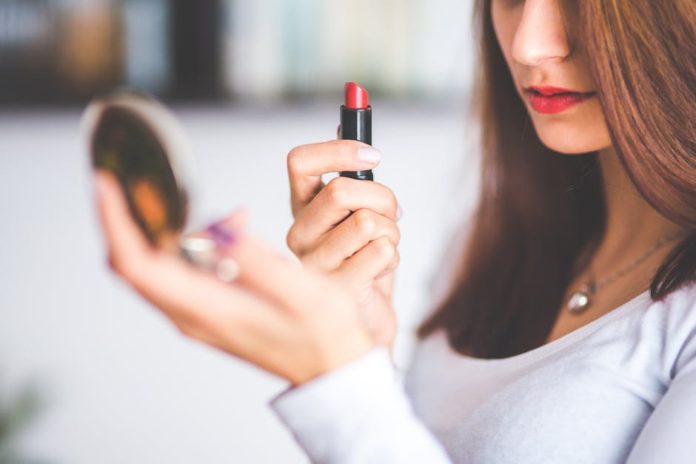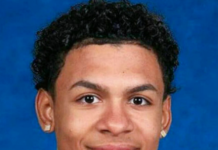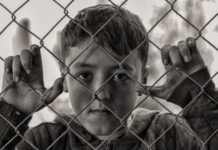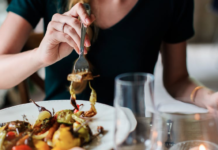Instagram has become the home for beauty and fashion especially in the past four years, since beauty bloggers overran the platform in 2014. “Instagram baddies,” as they have been called by the online beauty world, have effectively taken over.
“Instagram Baddies,” is a play off the colloquial term “ bad b*tch,” a debatably offensive expression, to describe a woman as beautiful or sexy. Internet seductresses more accurately put, not only solicit makeup products, clothing, and other sponsored material, but sex-appeal is also a major factor that keeps the beauty industry thriving online. Well into 2018, Instagram-born companies have emerged as a result of the influx of beauty influencers, including aspiring models, product ambassadors and more.
According to recent findings, the boom of self-proclaimed beauty experts, although a useful source of beauty advice and information for some, may also be part of a major insecurity problem in which social media has helped worsen.
In 2015, Dove surveyed 1,027 women between the ages of 18 and 64 to discover what shapes our ideas of beauty. The results showed that women are twice as likely to say that their conception of beauty is molded by “women in the public domain,” diminishing themselves, and uplifting women like the Kardashians and other well-known celebrities. Yet another study, conducted in 2016 by psychologists from The University of Minnesota produced similar findings, except experts found that women are not only using social media to compare themselves to stars, but to also build their self-esteem through likes and picture comments.
These results although seemingly disjointed, speak volumes as to the complexity of the problem.
For one, majority of women don’t look like the surgically modified versions of the Kardashians—or beauty gurus, many of which have admitted to going under the knife. Still beauty accounts of the sort have generated millions of followers to date, despite a sometimes obvious and drastic changes to their appearance.
A solution to this problem has been found in what The Atlantic Magazine is calling “The Confidence Gap,” which affirms that women are less self-assured than men, making them more critical of themselves, both physically and mentally. Although the study identifies women in the workplace as the primary focus, their findings are still telling about how women think about themselves in an everyday context. Women are 30% less likely to assert themselves, and overall exercise self-doubt more than men. This stems from an overall culture of insecurity, that has been historically facilitated by men, but also encouraged by women alike well into present day.
In the digital age, this female-plighted insecurity complex has only now found its way to social media— a place where women are seemingly able to interact with content and other people free from judgement. This is clearly not the case.
Here is where the solution comes into play;
Cameron Anderson —a featured phycologist in “The Confidence Gap” study says that if women begin to think of themselves as confident and act as if they are secure in their own right, women are less likely to be bothered by outside influences. Meaning abstaining from comparisons, and practicing good-old self-love for size.
Easier said than done, but what is certain is that there is power in numbers, meaning that if more women take to social media to showcase different kinds of beauty, social media would have no choice but to evolve in favor of a new majority. Data shows that social media is just a complex system of call and response. Interaction and reaction, says Digitaltrends.com. Already, women have been trying this solution out with enormous success. What this also means is, we have already started to bridge the “Confidence Gap.”
Evidences of that are beginning to crop up everywhere, even on the runway.
“Thanks in particular to Instagram, unconventional models are being cast as campaign stars…turning the notion of the untouchable fashion muse on its head,” said a think piece by I-D Magazine’s Elsa de Berker. The story entitled “How Instagram Created the Modern Muse,’ cites Thompson, Kate Bowman, and androgynous male-model Jake Levy as new faces changing the way people—particularly women—define and see beauty.
Calvin Klein’s “My Calvin’s” campaign has also followed suit in embracing adverse beauty, by not only featuring the faces of wildly famous stars, but also those of unconventional beauties like proud gap-toothed model Simone “Slick Woods” Thompson. In the same year flowerchild and modern-hippie Willow Smith became one of Chanel’s youngest campaign ambassadors, following in the footsteps of supermodel Cara Delevingne, who gave face to quirky girls everywhere.
Currently, a beauty trend of its own inspired by black beauty is continuing to pick up relevance in the beauty community. Melanin on Fleek as it was coined by designer and Entrepreneur Evertt X Blake, has since been reincarnated from a catchy brand slogan, into a number of melanin-related hashtags, beauty accounts, Instagram challenges and more. Positive associations that came of the online celebration of dark skin has even inspired the otherwise white-washed makeup industry, save for a handful of brands, to expand their foundation and other base products to be more inclusive. As a testament to that, Megastar Rihanna’s ever-popular cosmetics line, Fenty Beauty, is continuing to pick up steam as the #1 inclusive beauty brand according to a 2018 Marie Claire round-up.
With this, it is fair to say that social media is starting to diversify. It might be a slow effort, but one that is dually emerging.










